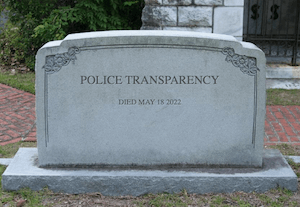SCRANTON, LACKAWANNA COUNTY (WBRE/WYOU) — The Red Sand Project raises awareness of exploitation and trafficking. Earlier Wednesday, the Children's Advocacy Center of NEPA and the NEPA Task Force Against Human Trafficking hosted the event in Scranton.
A crowd gathered around 12:00 p.m. on Wednesday, with the red sand visible in the cracks of the sidewalk for all to see.
Those walking around downtown Scranton might be seeing red sand poured into the cracks in the sidewalk. The sand is not graffiti, but a representative of victims of human trafficking who fell through the cracks.
Missing Moosic man found dead in Luzerne County
"The sand is in the cracks to make sure no children fall through the cracks. We're hoping that the more information, more education we bring to the public, the less children will fall through those cracks," child forensic investigator at the Children's Advocacy Center of NEPA, Zoe White, explained.
The Red Sand Project is a national movement started by artist Molly Gochman in 2014.
The project has been held in Scranton annually for a couple of years.
One organizer tells 28/22 News that this is their biggest collective movement.
Lackawanna County's District Attorney Brian Gallagher says those who joined the effort are a committed crew.
"They're very dedicated, selfless individuals who really have a passion to help people. Trauma service providers, children and youth, law enforcement, we can't do our job unless all these people come to the table and help us," Gallagher said.
Others at the event say their line of work deals with profound sadness, and to be able to participate in something like this means the world to them.
"All this stuff happens in the darkness, no one sees it, it's not out there publicly, and we're trying to bring it to light because the notion and people's thoughts on what is human trafficking is different than what it actually is," Gallagher added.
Organizers hope the red sand will help people become more aware of those who are affected by human trafficking.
"I hope everyone feels a sense of community and empowerment. I hope people can look at this sand and realize that this is happening right on our streets, right where we live," White said.
You can learn more about the Red Sand Project online.
